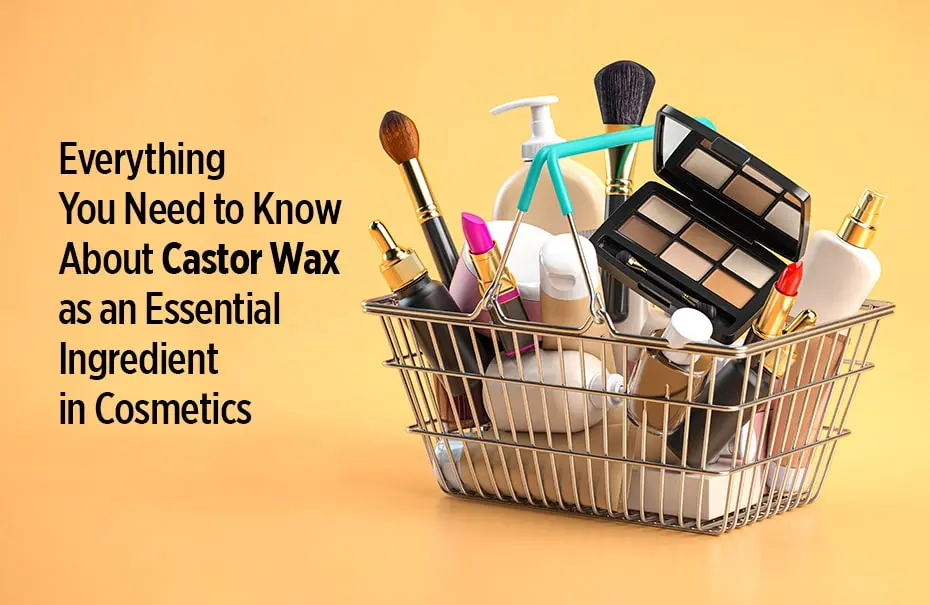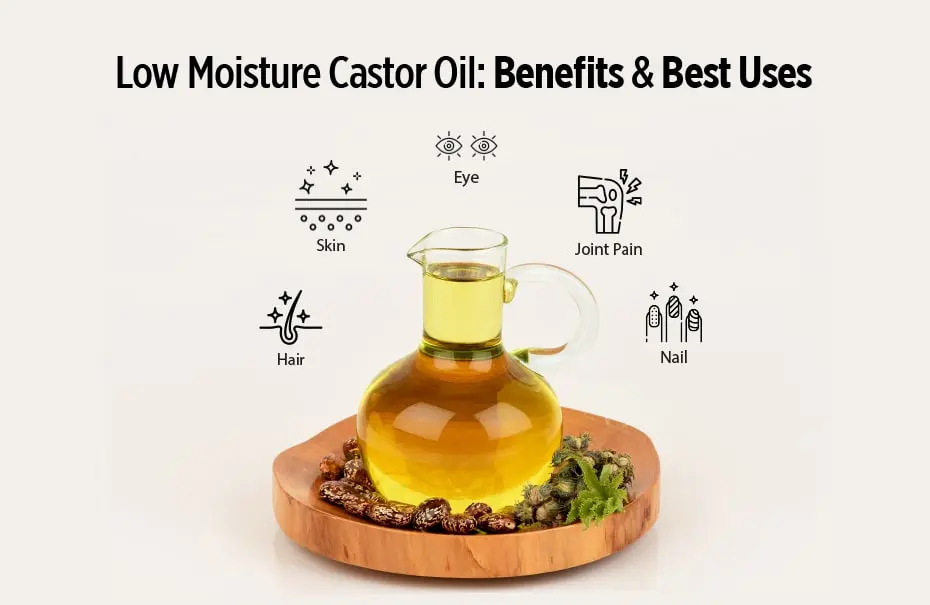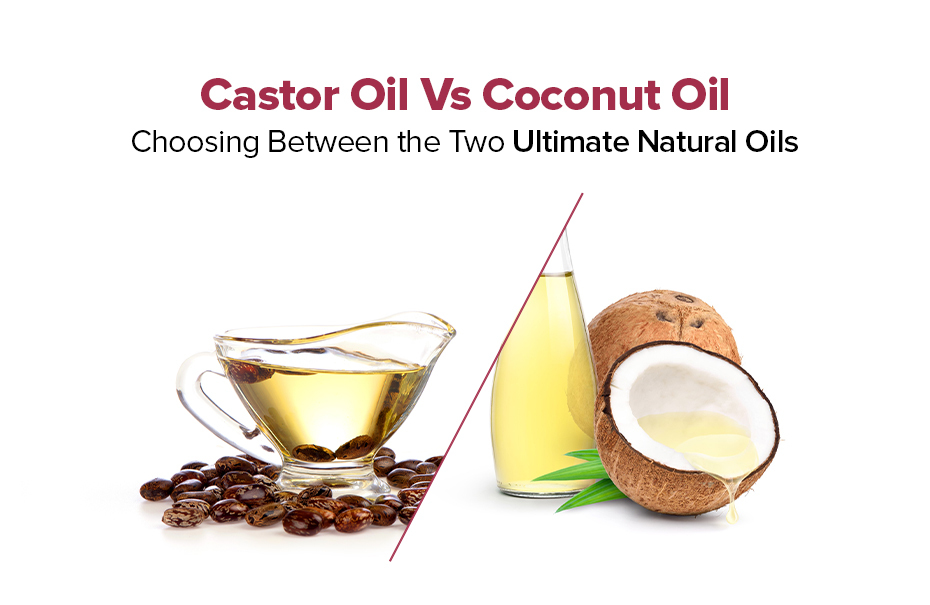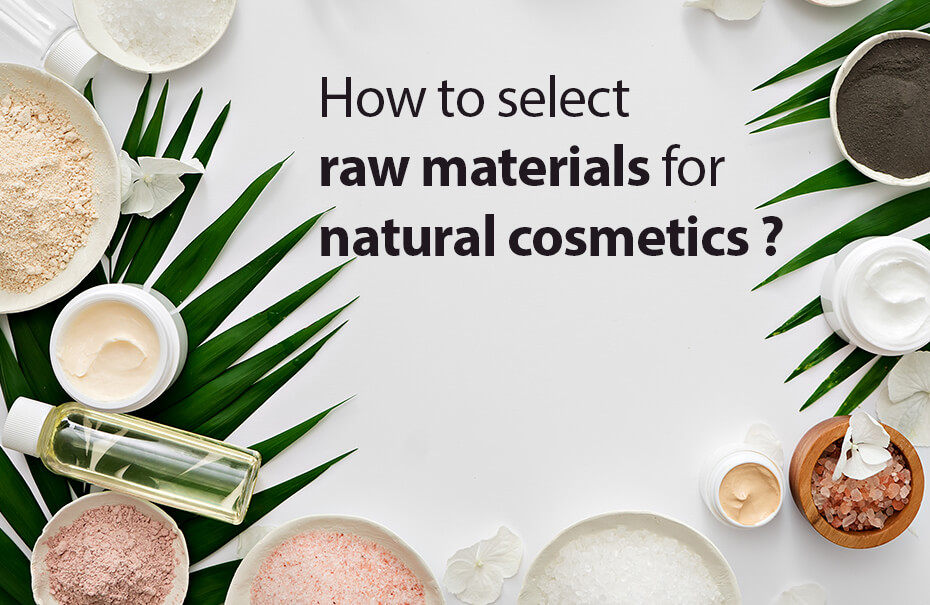Everything You Need to Know About Castor Wax as an Essential Ingredient in Cosmetics

The cosmetic industry is full of surprises because so many elements are combined together in the right proportion and environment to make one product. Wax is among such elements that are active participants in various cosmetic formulations. Today we will talk about one such natural wax called “Castor Wax” knowing about which will blow your mind away.
Role of Waxes in Cosmetics
Wax is commonly used in cosmetics as a thickening agent, emollient, and to help create a desirable texture. There are different types of wax used in cosmetics, including natural waxes like beeswax, carnauba wax, and candelilla wax, as well as synthetic waxes like microcrystalline wax and paraffin wax.
Natural wax is a type of wax that is derived from natural sources such as plants, animals, or minerals. It is commonly used in a variety of applications, including cosmetics, candles, and food, and is an excellent alternative to synthetic wax, as it is environmentally friendly, non-toxic, and biodegradable.
Beeswax is a natural wax commonly used in cosmetics for its emollient properties and ability to help form a protective barrier on the skin. It is often used in lip balms, body lotions, and creams. Other than that, there are other natural waxes like Carnauba wax, used in hair styling products, such as hair waxes, pomades, and gels, due to its ability to provide a stronghold, and Candelilla wax, used in cosmetics as a thickening agent and to provide a glossy finish. But, Castor wax, among all other natural waxes; is the one making headlines the most at present. Let’s understand why.
Castor Wax: Its Making, Properties, & Uses
Castor wax, also known as hydrogenated castor oil (HCO) or castor wax flakes, is a type of natural wax. It is an opaque, thick, sticky, and odorless, white vegetable wax derived from castor oil which is extracted from the seeds of the castor plant – native to tropical regions of Africa and Asia.
Castor wax is a castor oil derivative and is used primarily to thicken emulsions, bind antiperspirants, and disperse pigments in a variety of personal care products (typically anhydrous systems).
The Making
To produce castor wax, the hydrogenation of pure castor oil is conducted in which, the castor oil is first hydrogenated, which means that it is heated in the presence of hydrogen gas to make it more solid and stable at room temperature.
The process involves adding hydrogen to the unsaturated fatty acids in castor oil in the presence of a catalyst, usually nickel or palladium, which is added to the oil along with hydrogen gas. The mixture is then heated and agitated to promote the reaction between the hydrogen and the unsaturated fatty acids in the oil. The end result is a product that is a harder, brittle, more stable, odorless, and tasteless wax that is insoluble in water and has a higher melting point than the original castor oil.
The Properties
Cream-to-white colored castor wax is flaky or powdered in nature. It is odorless, tasteless, and insoluble in water; hence, it does not wash away easily. It has a density of 0.970 at 20⁰C, with a high melting point of around 85-95°C (185-203°F). It has emollient properties, which means that it helps to moisturize and soften the skin, and is a good film-forming agent, which means that it can form a protective barrier on the skin or hair. It also has lipo-gelling properties, which means it helps in the reduction of fat and cellulite from the body, especially in the arms, legs, and abdominal region. Lastly, it acts as a viscosity-controlling agent.
The Uses
Castor wax is an important and popular ingredient for cosmetics makers because it has several beneficial properties for the skin and hair. One of the main benefits of castor wax is its emollient properties, which help to moisturize and soften the skin. Other than that, its anti-inflammatory properties are believed to be very effective in soothing and calming irritated skin. Additionally, castor wax is rich in ricinoleic acid, a fatty acid that is known to have antimicrobial and anti-inflammatory properties.
In cosmetics, castor wax is often used as an emulsifier, which helps to combine oil and water-based ingredients in a formulation. It is also used as a thickening agent, which can give products such as creams and lotions a richer texture. Here are some ways in which castor wax is used in beauty products:
Hair care: Castor wax is often used in hair care products, such as shampoos, conditioners, and styling products, due to its moisturizing and conditioning properties. It can help to smooth and soften hair, reduce frizz, and enhance shine. Castor wax is also known to help promote hair growth and reduce hair breakage.
Skincare: Castor wax is commonly found in skincare products, such as lotions, creams, and balms, due to its emollient properties. It is today the most-sought ingredient in cosmetic products because it can not only moisturize and soften the skin, but can also reduce inflammation, and even protect the skin from environmental stressors. It is great for reducing wrinkles, revamping the skin, and making it look supple and radiant. Castor wax is also used in lip balms to help soothe and protect dry, chapped lips. It acts as an excellent cleaning and moisturizing agent and even aids in treating fungal infections on the skin.
Makeup: Castor wax is often used in the formulation of makeup products, such as lipsticks, eyeliners, and mascaras, due to its smooth and creamy texture. In addition to providing a protective barrier for the skin, it can improve the spreadability and glide of the product.
Nail care: Castor wax is used in nail care products, such as cuticle creams and nail polishes, due to its moisturizing and protective properties. It can help to soften and condition the cuticles, as well as provide a protective barrier on the nails to prevent damage and breakage.
Other industrial uses: Apart from the wide range of applications in the cosmetic industry, castor wax is also used in the manufacture of soaps, candles, and other personal care products as a natural alternative to petroleum-based waxes
It has also found its place in industries manufacturing polishes, oil paints, electrical capacitors, lubricants, laundry and dishwashing products, carbon paper, coatings and greases, and so on.
Sustainable and Ethical Aspects of Castor Wax
Castor wax is a sustainable and ethical ingredient for cosmetics makers to use. Some of the eco-friendly and ethical advantages of using castor wax in cosmetics include:
Renewable Resource: Castor wax is derived from the castor bean plant, which is a renewable resource that can be grown and harvested without harming the environment.
Biodegradable: Castor wax is biodegradable, which means that it breaks down naturally in the environment without causing harm.
Fair Trade: Many cosmetics companies that use castor wax source it from fair trade suppliers, ensuring that the farmers who grow the castor beans receive fair compensation for their work.
Conclusion
Castor wax is undoubtedly a versatile and important ingredient in the cosmetics industry, with its natural emollient, thickening, and humectant properties making it a popular choice for skincare and makeup products. Its eco-friendly and ethical advantages also make it an attractive option for cosmetics companies looking to produce sustainable and ethical products. By using castor wax in their products, cosmetics makers can create high-quality products that are both effective and environmentally conscious.
So if you are looking for a reliable source to buy 100% pure Castor Wax, your search ends here because we, Ambuja Solvex, are known to be one of the best and the largest hydrogenated castor oil manufacturers in India, for a reason which you will know for yourself once you try our castor products. Visit now!



